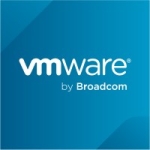What is our primary use case?
We're not using it full-blown; the plan is you have the developers to be able to develop an on-prem and then move it over to the cloud. That was a scenario. We stood up these environments so that it would be easier for us to control our internal costs for development so that we're not spitting up these cycles in the cloud and causing more cost versus just building an on-prem and then moving it to the cloud.
What is most valuable?
So far, we are in the POC stage. Overall, it is working well and we are happy with its capabilities.
The product has been quite stable.
They come out with versions regularly and they are pretty simple to update and the updates are pretty straightforward. You don't have to go through a lot of stuff to go through with the gap. You have a rolling upgrade which is nice. The key part about Ranger is that it has a good relation to storage. It has a great feature for persistent storage for Kubernetes and they work extremely well with one another. Otherwise, you've got OpenShift that uses Cipher and that's yet another infrastructure you have to build out.
The scalability potential is very good.
What needs improvement?
We're looking for something that is even easier to use. It's a bit complicated. When you're dealing with Kubernetes, it is easier, however, there's still a lot of convoluted types of commands.
The situation goes pretty deep and when things go South, you spent a lot of time trying to figure things out, and it takes a certain amount of skillsets. To ramp up those skillsets takes time. Unfortunately, we don't have the time to ramp up those skillsets to bring those things in. There are other solutions out there such as HashiCorp, which offers its own version of managing containers. It doesn't use Kubernetes; is a different way of doing it.
The product could use just a little bit more Federation-type capabilities going forward when you're going to the cloud. That's the kind of stuff I can use. You've got different regions within the cloud, and just from that, we that kind of support.
For how long have I used the solution?
I've been using the solution for about a year now.
What do I think about the stability of the solution?
The stability of the solution has been good overall. It's reliable and offers good performance. There aren't bugs or glitches. It doesn't crash or freeze.
What do I think about the scalability of the solution?
The solution will scale well. That said, we haven't tested it, however, it's pretty straightforward. You just run a couple of commands to build out another node and you scale.
Currently, we don't have too many people on the product. It's just a very few people, just the Unix team, which is about six people right now.
How are customer service and technical support?
Technical support is very good. They're very helpful and responsive. We are quite please with the level of assistance we receive.
How was the initial setup?
The initial setup wasn't simple. It was a bit difficult and a bit complex. We had to get a little help from the Rancher folks to set it up initially, as we really didn't know what the hell we were doing.
The solution doesn't need a lot of maintenance; we have a team of six people working on the solution currently and any one of us could handle it.
What about the implementation team?
Rancher helped us a lot at the outset. We didn't know how to manage the initial setup by ourselves.
What's my experience with pricing, setup cost, and licensing?
I don't handle contracts or licensing costs. I can't speak to how much the solution costs.
That said, it is my understanding that the pricing is very comparable to what else is in the market.
Which other solutions did I evaluate?
We're starting to look at Amazon EKS. We haven't begun to work with it, however, since we use Kubernetes, it may be an option in the future.
What other advice do I have?
We're using the latest version of the solution at this time. I can't recall the exact version number, however.
Currently, the solution not fully in production just yet. It's still kind of like a POC. The value it brings to us is that it's a great tool. We're able to use it. It seems to be able to do the job, however, we are still looking around.
I have no negative thoughts about Rancher. It's a great product for what it is. As far as getting support, the support has been very good. There are some good price points. Ever now since they were acquired by SUSE there's been plenty of opportunities there as well.
In general, I would rate the product at a seven out of ten.
Disclosure: My company does not have a business relationship with this vendor other than being a customer.



















